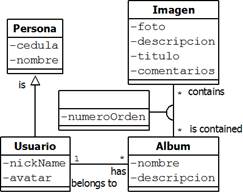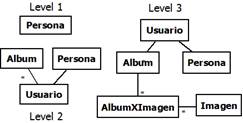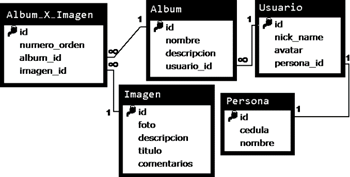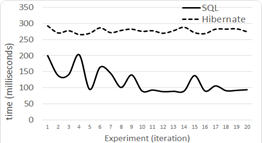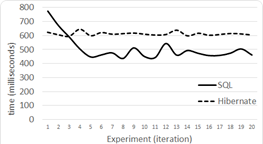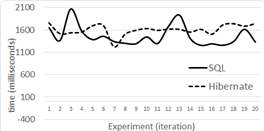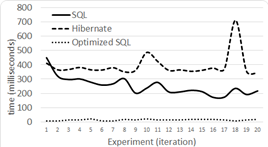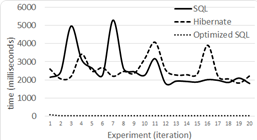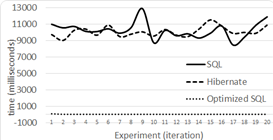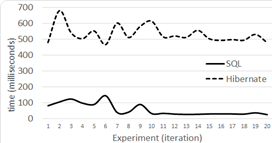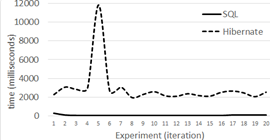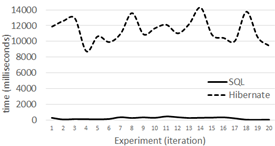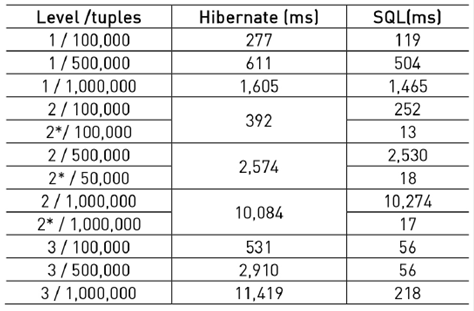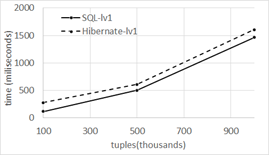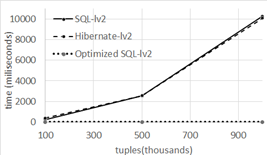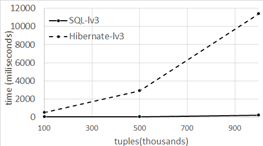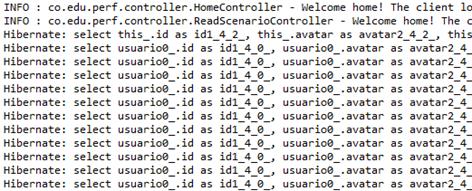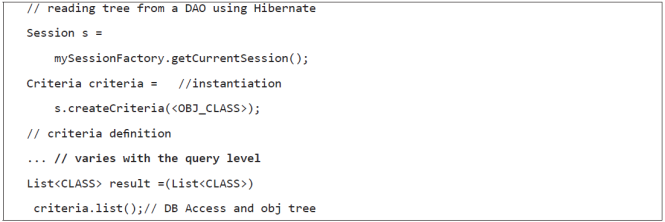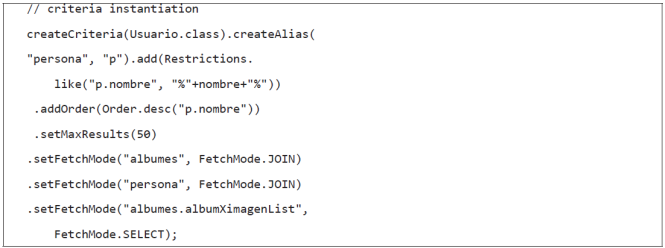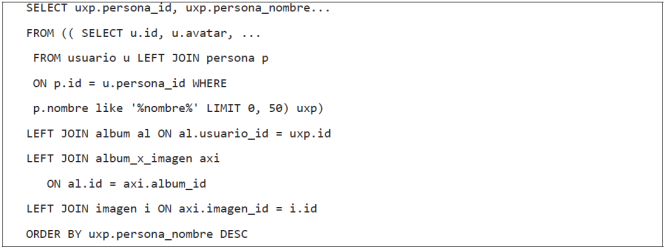1. Introduction
Today, the task of producing web applications is widely addressed using a mixture of object oriented programming (OOP) 1, database (DB) products 2 and Web Application Frameworks (WAF3. These techniques are used because they allow developers to represent data in a convenient way, increasing their productivity 1)(4)(5)(6.
However, objects and relational DBs belong to different paradigms, each one having its own data types and organization principles 7. These differences have been called the impedance mismatch 7. According to 8, Object Oriented Programming (OOP) languages are good at structuring complex non-persistent data having relationships, whilst relational DBs are good at structuring large amount of simple persistent data, but not good when dealing with complex associations.
To solve the impedance mismatch problem an application requires an interface layer to make both paradigms compatible. In WAFs, this layer has been called Object Relational Mapping (ORM). The ORMs map data from DB to OOP, allowing programmers to query DB records in a simple and powerful way without changing the OOP program point of view.
As mappings, ORMs can be used as abstraction barriers 9 between relational DBs and OOP programs. This is possible because, changes in the OOP or in the DB models affect the mapping function only, preventing them from propagating to the other side. Consequently, using ORMs is an important maintainability factor.
The maintainability benefits of ORMs have been included in most WAFs as a “off the shelf” pre-coded component. Unfortunately, off the shelf ORMs might threaten the overall application performance. In fact, when a programmer builds his own ORM, he is free to tailor it to the program, applying specific efficiency criteria to improve the query performance; in contrast, off the shelf ORMs craft the queries in a standardized way, making harder to achieve the same specific efficiency.
Consequently, using off the shelve ORMs creates tension between maintainability and performance. On one hand, they ease the task of developing websites controlling the complexity of the software specification; on the other hand, they can affect performance to the point that the program response times become unacceptable.
That tension has been studied by several authors 10)(11)(12)(13 for the Hibernate ORM Framework 14. However, they did not consider a case study complex enough to properly analyze the tension we described before.
In our study, we went one step forward by analyzing the performance for queries of three complexity levels and three different DB sizes. We compared queries manually coded in SQL, optimized and non-optimized (in what follows optimized and non-optimized SQL queries) against queries automatically crafted by Hibernate (in what follows Hibernate queries). To test the queries we built a program in the Spring WAF. We selected Spring based on its popularity 15)(16)(17)(18 and because it integrates easily with Hibernate.
As the main goal of our study was to analyze the impact of query-complexity and DB size in the performance of Hibernate and SQL queries, we took measures to maintain constant all other variables. In particular, we used default configurations for Hibernate, Apache and MySQL, avoiding tune-ups. Moreover, to be sure we followed the best possible coding practices, we consulted the official documentation, online forums, taking the recommendations from 19 regarding Hibernate annotations.
We present our research as follows: section 2 analyzes the related work; section 3 presents our case study problem; section 4 presents the problem Class Diagram and relational model; section 5 shows our efficiency findings. In section 6 and 7 the reader can find the details about the implementation: section 6 describes the Spring JAVA Classes and the way they relate to the Relational DB Tables, and section 7 describes the DB access elements built as JAVA DAOs. Finally, in section 8 we present conclusions and future work.
2. Related work
In 10, the authors present a performance analysis between Hibernate and Eclipselink involving stress testing and heap size measurement. The results give advantage to Hibernate for CRUD operations over 20,000 records; however, they did not analyze the performance for different DB sizes or optimized SQL queries.
The authors in 11 highlight the role of the "Persistent Framework" (the ORM) as a layer between a DB and the business classes (see Figure 1). They point out the importance of choosing properly such framework to improve performance. They compare the performance of the OJB and Hibernate persistence frameworks, by read/writing 1000 objects in both a centralized and a distributed DB, concluding that OJB is slower.
Similarly, in 12 the authors present a performance comparison between db4o and Hibernate by testing CRUD queries. The conclusion of this study was that db4o is faster than Hibernate, but, the authors stated concerns about using one session per query and left as future work to study the impact in performance of this setting.
In 13, the authors compared the performance of db4o and manually coded SQL queries, over a single table with 29 attributes and no primary key. They considered four DB sizes ranging 1,000 to 80,000 tuples. The authors concluded that manually coded queries perform better, by a great margin, with the exception of the insertion queries.
In 17, the authors tested db4o and SQL by reading and writing on DBs of different sizes. They concluded that for low DB sizes db4o performance was closer to MySQL, whilst Hibernate was significantly slower. However, when DB size grow db4o’s performance rapidly degrades, while Hibernate’s and MySQL’s response times grow slower. This suggests that even when Hibernate do in fact introduce overhead, it is much more scalable than db4o, and scale closer to MySQL.
The studies presented in 10)(11)(12)(13 have the inconvenience that they focused on a single class/table and do not explore the complexities related to relationships. Those studies also present little implementation details, making difficult to reproduce the experiments.
Even when the study presented in 17 considered relationships, they are reduced to relationships between two class/tables (flights and airports), and the DB sizes were not large enough. So, even when Hibernate has a satisfying behavior, the evidence is not sufficient to say that it will remain as scalable as SQL queries.
3. Case study definition
3.1. Class diagram
In Figure 2 we present the Class Diagram of an advertisement web application oriented to display photo albums. We drew the diagram using the notation proposed in 20.
Note that our CD has classes and class member names written in Spanish. This is because the source code names were written in that language and we did not want to misrepresent what was done before.
3.2. Complexity levels of queries
In our study, we related the query complexity level, to complexity of the result obtained by reading the DB and turning the retrieved data into objects with relationships. Based on this line of thinking, we used three query complexity levels, each one associated to the effort needed to obtain the object structure represented in Figure 3.
Also, all of DB readings, with SQL or Hibernate, were filtered by the person’s name according to a random alphabetical character (as in SQL: "like %" + char + "%"). The resulting DB readings were to the first 50 root objects with no limit to related ones.
Level 1 - Persona
Level 1 is our lowest query complexity level. In this level, we retrieve a list of Persona objects. We consider low this query complexity level, because it only reads one DB table, and it only creates a simple object list. This occurs, for example, when we want to retrieve some of the people that are registered in the website.
Level 2 - Usuario and album
Level 2 is our intermediate query complexity level. In this level, we retrieve set of Usuario, Persona and Album objects. This query complexity level is intermediate, because it has data from three DB connected tables, and has to turn the data into a set of objects connected as shown in Figure 3. This occurs when we want to know the albums associated to a user with a given name.
Level 3 - Album and imagen
Level 3 is our highest query complexity level. In this level, we retrieve a set of Usuario, Persona, Album and Imagen objects, as well as the image order number (numeroOrden, see Figure 2). This query level occurs, for example, when we want to know what images are in albums of some user.
This is the most complex scenario for two reasons. In the first place, increasing the search depth in a DB implies accessing more tables, and this is a process that can take a long time if the DB contains a large amount of records, or the queries are not optimized. In the second place, the objectual representation of many-to-many relationship between Album and Imagen needs to include an attribute as part of the relationship.
4. Designing the case study
We built a Spring web application following the Model-View-Controller (MVC) design pattern 21.
4.1. Database structure
In concordance to our CD, our DB has five tables, one for each class in our CD and one intersection table to represent the many-to-many relationship. In this way, the relationship attribute numeroOrden was represented with an extra column in the intersection table. In Figure 4 we show our DB relational model.
4.2. Class model in spring framework
Given that Hibernate does not allow linking classes to multiple tables, we decided to code a JAVA class for every DB table. Consequently, we defined {Album, Imagen, Usuario and Persona} classes. In order to represent the primitive data from the DB tables, we used private String attributes in the classes. Finally, we included a Long id attribute as the Hibernate identification strategy.
4.3. Relationships of the class model
In the Spring code, we represented relationships between two classes with object valued attributes of the corresponding type in both classes 22. The relationship’s cardinality determines if the attribute is a single object or a collection of objects.
For one-to-one relationships, we included an attribute of the other side type in both classes. For example, to represent the relationship between Usuario and Persona, we added an Usuario typed attribute in Persona and a Persona typed attribute in Usuario.
For one-to-many relationships, we did as in the one-to-one for the one-side of the relationship, whilst for the many-side we used a list-of-objects attribute of the opposite side type. For example, the one-to-many relationship between Usuario and Album was represented with one Usuario typed attribute in Album and one List<Album> typed attribute in Usuario.
The many-to-many relationship between Album and Imagen classes is more complex as it has an attribute that will be lost if modeled with two typed-list attributes. Given that the many-to-many relationship was solved in the DB with an intersection table containing an extra column, we decided to use a new class (AlbumXImagen.java) containing an attribute for numeroOrden. Additionally, to maintain consistency, from the point of view of Album and Imagen classes, we included an AlbumXImagen-typed attribute in both of them, as shown in Figure 5.
We represented the inheritance relationship between Usuario and Persona using object valued attributes instead of using JAVA inheritance. We did so because, no matter if the inheritance was modeled as an object valued attribute or extending a parent class, the underlying process for reading data is theoretically the same as it needs to read both tables using the foreign key.
5. Results
The following results show the impact of the query complexity in the performance of Hibernate and both optimized and non-optimized SQL queries. They were obtained by running our application for the three complexity and three different DB sizes.
To run the application we used Apache 2.4.4, MySQL 5.6.12 and Hibernate 4.2.2. Final software versions. Also, the experiments were made in a Samsung ultrabook, Intel Core I5-3337U CPU @1.80GHz x 4, 4GB DDR3 RAM, and 64 bits Windows 8. We ran all test the same day, in the same machine, with the same processes load, avoiding tune-ups that could give advantage to Hibernate or SQL queries.
We performed reading tests for each complexity level defined in section 3.2. Tests were executed in a DB with 100,000; 500,000 and 1,000,000 tuples. Additionally, every test was executed multiple times, measuring the execution time in every iteration.
We performed each test multiple times because, execution time changes for each successive repetition of the test showing a tendency to descend. Those changes occur as a consequence of the cache mechanisms that are present in Spring, Hibernate and MySQL. Even the operative system affects the performance; as when querying the database, the data retrieved will either be actually read from the hard drive or taken from the already loaded data in RAM memory.
Consequently, we present our results in two steps. The first step presents the experiment raw data using time vs iteration graphs. The second step compares performance relying on the average response time. The average response time is interesting since it is an estimate of the time in which the application will respond in a real environment. We can expect to find similar behavior when multiple clients use the website at the same time. The actual results for every reading level and DB size are presented below.
5.1. Results per complexity level
Level 1 results for 100,000 tuples are shown in Figure 5, for 500,000 in Figure 6 and for 1,000,000 in Figure 7.
Level 2 results for 100,000 tuples are shown in Figure 8, for 500,000 in Figure 9, and for 1,000,000 in Figure 10.
Level 3 results for 100,000 tuples are shown in Figure 11, for 500,000 in Figure 12 and for 1,000,000 tuples in Figure 13.
The average response times for the three reading levels are presented in Table 1. Rows marked with “2*”, in the column level/tuples correspond to MySQL optimized level 2 response times.
5.2. Discussion
As the DB size grows, the application's response time grows too. This occurs because the search space gets bigger and the Join clauses are especially sensitive to the amount of records. In Figure 14, 15 and 16 we present the average response time in function of the database size.
Our average response times, for levels one and two, show that the performance of Hibernate and non-optimized SQL queries is similar in a DB with few records and simple relationships. This behavior was already described by 17. However, when going from half million records to one million, we can see that Hibernate and non-optimized SQL queries’ response time is strongly non-linear. This non linearity is shown for level 1, 2 and 3 in Figure 14 and 15, where performance times grow tree and almost five times respectively.
In fact, in Level 1 with DB sizes of 100,000, 500,000 and 1,000,000 tuples, Hibernate is in average 158 (132%), 107 (21%), and 140 (10%) ms slower respectively. In Level 2 with the same DB sizes Hibernate in average is 141 (56%) and 44(2%) ms slower than the not optimized SQL respectively. Our findings for 1,000,000 seem odd as Hibernate was faster for 191 ms (-2% faster). This was probably caused by the cache capabilities of all of the technologies we used, and because in this test level the SQL query is not optimized. Furthermore, the reader must remember that all of our tests include tuple selection based on a randomly generated name.
On the other hand, authors in 17 suggested that their work is susceptible of optimization. Our results for optimized level two and level three queries show a severe gap between the performance of Hibernate and SQL (see Figure 15 and 16). In Level 2, when we optimized the SQL query with DB sizes of 100,000, 500,000 and 1,000,000 tuples, Hibernate is in average 378.8 (2,859%), 2,555.8 (13,853%) and 10,066.35 (58,525%) ms slower respectively. In Level 3, with the same DB sizes Hibernate, is in average 475 (842%), 2.855 (5,079%) and 11,201 (5,139%) ms slower respectively. There is a big difference in this case.
In contrast as we did with SQL, we could not identify a good way of optimizing level 3 queries using Hibernate. We could not even find specific HQL´s documentation regarding this topic. So, to the best of our knowledge, we made sure that Hibernate Level 3 queries minimized unnecessary DB accesses.
However, another unexpected finding was that hibernate reports doing 26 queries to obtain the results for our level-three-complexity scenario. In Figure 17 we show a fragment of the Spring console output of those undesirable queries.
Finally, as the details behind our results can be of particular interest to certain readers we present them as follows, in section 6 we show how we linked Hibernate to our CD and in section 7 we present how the DB was accessed with both Hibernate and SQL.
6. Implementation
We made sure the most convenient implementation for our tests were achieved by focusing on query complexity and DB size be the only variables impacting performance. So, we searched all the available literature we could and followed the official documentation, online forums and the recommendations of 19 regarding aspects influencing the performance of Hibernate. The authors in 19 define an anti-pattern as a bad practice that has a negative impact in application performance, and presents five of them regarding relationships. On this ground, we constructed the best possible implementation based on the acquired knowledge.
6.1. Linking classes and tables
Hibernate can establish a link between a JAVA class and a DB table by using annotations. Annotations in the class definitions link them to the corresponding DB table while annotating attributes link such attributes with the corresponding table column, or with another object according to relationship defined by the foreign key.
Thus, we linked our CD’s class models with our DB tables using @Entity, @Table, @Id, @GeneratedValue for Hibernate identification strategy, and @Column for the primitive class members. In Figure 19 we present Album’s case as an example.
For one-to-one and one-to-many relationships we used @oneToOne, @OneToMany and @ManyToOne annotations. In all cases, we defined the inverse relationship using the @JoinColumn annotation.
6.2. Many to many relationships
To link this relationship, Hibernate offers @ManyToMany annotations, but in our class diagram this relationship has an attribute. Because of this, we split such relationship in two one-to-many relationships.
This caused Album and Imagen classes to be linked through AlbumXImagen. So, from AlbumXImagen class’ point of view this relationship becomes two new ones whose cardinality resembles an intersection table. This is, we put two @manyToOne and two @JoinColumns annotation in this linking class.
7. Database access
7.1. Controllers and DAOs
We used controllers with two main purposes. In first place, to execute DB queries either using SQL or Hibernate; and in second place, to measure and report response times by using Date.getTime() before and after of the connection, querying, and object assembly processes. These controllers serve the HTTP request using a Data Access Object (DAO) 23. We built two DAO classes one using Hibernate and another using SQL.
Our DAO classes access the DB using @autowired BEANs 24. Hibernate DAO uses the sessionFactory BEAN and @Repository annotation to manage DB transaction whilst SQL DAO uses the MySQL dataSource BEAN.
7.2. Object trees with hibernate
All of our Hibernate DAO methods for retrieving object trees are alike, the only code section that changes corresponds to the query criteria, see Figure 20. This criteria was constructed using Session’s createCriteria() method. Where <OBJ_CLASS> is the type of the resulting data, and <CLASS> is the type of the List used to capture the Hibernate API result, generally both classes are the same.
Level 1 Hibernate reading
In this level, we retrieve a List of Persona. So, we defined a Criteria with <OBJ_CLASS> equals to Persona (see Figure 21), and we added the name and page size restrictions (see section 3.2). Here, the variable nombre contains a random char between (a-z) (same for level 2 and level 3).
Level 2 Hibernate queries
In this level, we retrieve a List of Usuario including relationships with Persona and Album. So, we defined a Criteria with <OBJ_CLASS> equals to Usuario (see Figure 22) and, in addition to the name and page size restrictions, we added relationship constrains (see Figure 4) making sure Imagen or AlbumXImagen data was not retrieved.
Level 3 Hibernate queries
In this level, we retrieve a List of Usuario with full direct or indirect data, this is, with Persona, Album, AlbumXImagen and Imagen objects. As a result, this scenario reads data from all tables in the DB and construct the corresponding object tree.
Our first attempt to build the required criteria was to set <OBJ_CLASS> equals to Usuario and, in addition to level 2 query restrictions, we modified AlbumXImagen’s fetch mode from SELECT to JOIN. However, this approach resulted in this execution exception: "Request processing failed; nested exception is org.hibernate.loader.MultipleBagFetchException: cannot simultaneously fetch multiple bags". Not being clear from the Hibernate’s documentation the nature of this error, we assumed it was caused by the join depth complexity. The reader must remember that every Usuario has a List of Albums and every one of those also has a List of AlbumXImagen, see Figure 3.
After digging a little more in the problem we solved the issue by adjusting our model’s classes. This is, we changed both @OneToMany and @ManyToOne annotations so the related data would be eagerly loaded. Thus, we modified the albumXimagenList attribute in Album and imagen classes as a non-lazy collection, in Figure 23 we show this modification in the Java file.
This approach has the inconvenient that even when it solves the execution problem, the way classes were mapped causes both album and albumXimagenList attributes are always loaded. This lead queries to poor performance when those data are not required, take our level 2 queries for example. On this ground, we defined the required criteria as shown in Figure 24:
7.3. Object trees with SQL
All data obtained with manually coded SQL queries will be used as a reference to assess Hibernate´s results. To achieve the best performance in this DAO, we always accessed the DB using a single query, and building the required object tree with that result only.
Additionally, all of the three DAO methods are structured in a similar way; the two code sections that change correspond to the executed SQL statement and the construction of the object tree.
Object assemble using typed maps
To be able to compare SQL response times with those from Hibernate, it is necessary to recreate the same conditions. Given that executeQuery() method responds with a ResultSet collection instead with a set objects, we need to transform that resultSet.
Transforming tuples into objects is a simple task when the resulting data belongs to a single class (like in level 1 scenario); however, the same task becomes harder when such data belongs to many classes (like in level 2 and 3 scenarios).
To reduce the time the program takes to transform level 2 and 3 Resultsets into objects, we used a typed map - HashMap<id, object>- for every row contained in the ResultSet. This mechanism has the advantage of reading every tuple just one time. This approach solves the problem with and algorithm with order O(n).
Level 1 SQL queries
In this level, we retrieve a List of Persona using the SQL query shown in Figure 25. Also, we assembled the object tree from this Resultset using a simple loop that creates a Persona instance containing every row field as attributes.
Level 2 SQL queries
In this level, we retrieve a List of Usuario with Persona and Album data using the SQL query shown in Figure 26. Also, we assembled the object tree from this Resultset using one Usuario typed map.
Although this code is totally functional, the query can be optimized. We did this optimization as an attempt to prove that Hibernate cannot find the best way of solving the join order execution. We present our optimized SQL query in Figure 27.
Level 3 SQL queries
In this level, we retrieve a List of Usuarios with Persona, Album, Imagen and AlbumXImagen data using the SQL query shown in Figure 28. Also, we assembled the object tree using two typed maps, one for Usuario and one for Album.
8. Conclusions
In this research we compared the performance of Hibernate and SQL queries. We analyzed how overhead varies with the complexity of the query in a complex and flexible case study susceptible to be implemented in other technologies.
We tested Hibernate and SQL queries maintaining the same conditions for the three query complexity levels and DB sizes. To that end, we ran all tests the same day, in the same machine, with the same process load, using default configurations for Spring, Hibernate, Apache and MySQL, and maintaining the same DB optimization features. This way, we left the complexity of the query as the only variable responsible for the query performance comparison.
Our main conclusion is that Hibernate performance is similar to non-optimized SQL queries. This is, when queries need to access a single table, response times are comparable to those from SQL and even better [as reported in 17]. On the contrary, when the query complexity grows Hibernate proved to be much slower than optimized SQL queries. This happens because Hibernate cannot find the optimal join execution order, when accessing multiple tables with a relationship-deep of two levels or more.
We want to highlight the fact that query complexity was the most important variable in our study, and it proved to be the reason of the rapidly growing response times. Moreover, the performance gap related to Hibernate cannot be easily avoided by controlling joins or sub-queries execution order. An ideal ORM should provide a simple but powerful mechanism to control, when necessary, how those queries must access DB tables and ease the task of querying them with a single sentence.
This means that novice developers need to be careful when using ORM tools in complex scenarios to avoid overhead issues. In those cases, ORM usage will benefit developers only in the maintainability aspect. We also noted that in very complex scenarios, Hibernate will even lose the query optimization features available in different DB products as it exhibits the n+1 queries problem.
Secondarily, even though we performed tests for three DB sizes only, Hibernate and non-optimized SQL queries’ average response time vs DB-size curves appear to be strongly non-linear. Plus, the ratio of optimized-SQL and Hibernate-average-response-time is not constant and grows with the DB size (see Figure 15 and 16), suggesting that they belong to different complexity orders. Clearly there is a big gap between both Hibernate and non-optimized SQL queries, when compared to optimized SQL queries. However, more research is needed to properly determine the complexity order.
Finally, we want to point out that we had to change our class model to be able to retrieve data in level 3 scenario when using Hibernate. Even when this change was needed, it sacrifices the semantics of other queries. This is, by making eager the load of two attributes in level three complexity level, we also force level two and level one to load those attributes when they are not required. This is an issue we expect to solve in the future.
As future work, we will study more in depth the causes that lead Hibernate to poor performance. Additionally, we will test other ORM tools for JAVA and from other languages to determine if this problem is specific to Hibernate or transversal. To do so, we will use our case study as a benchmark.














